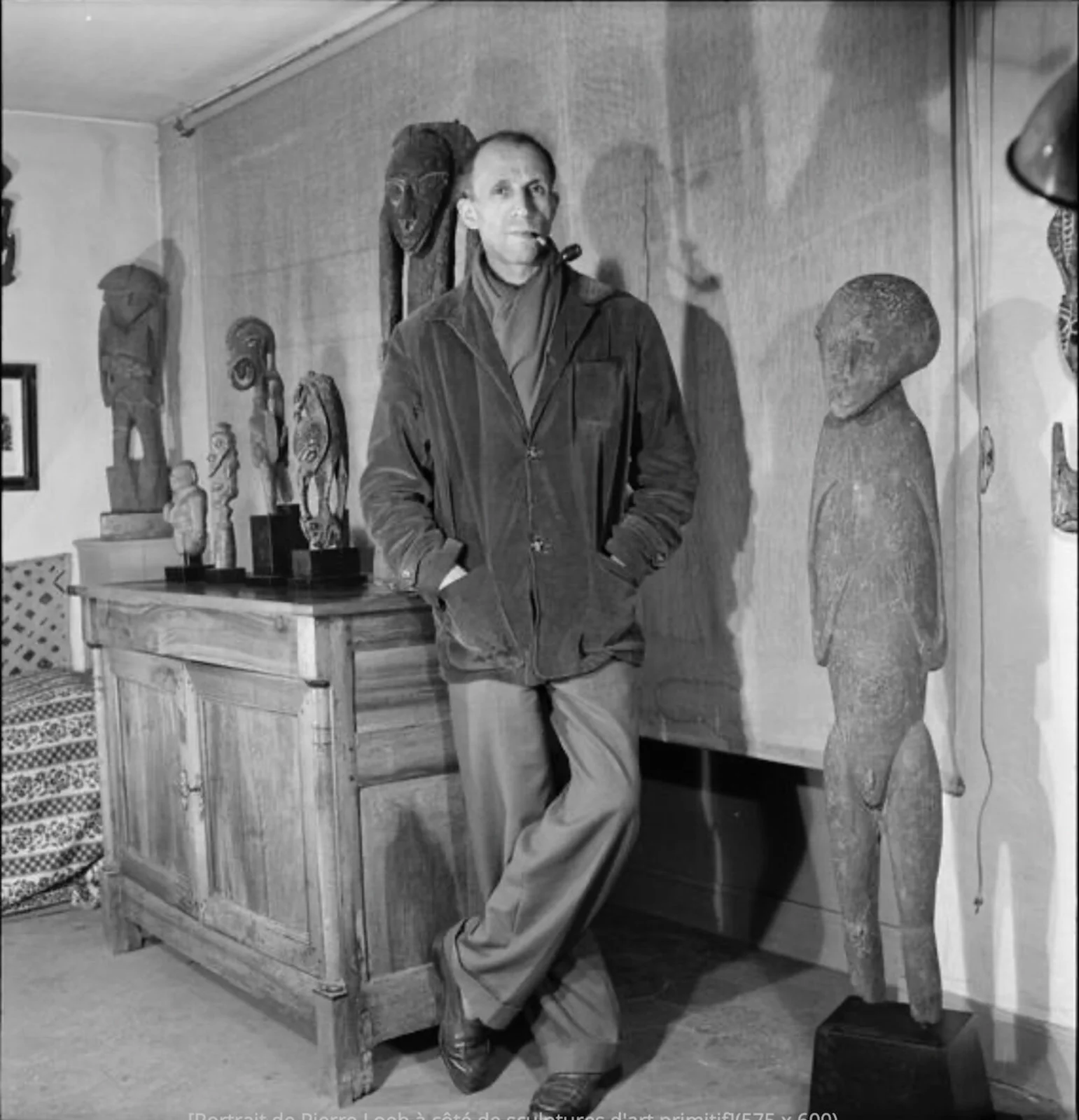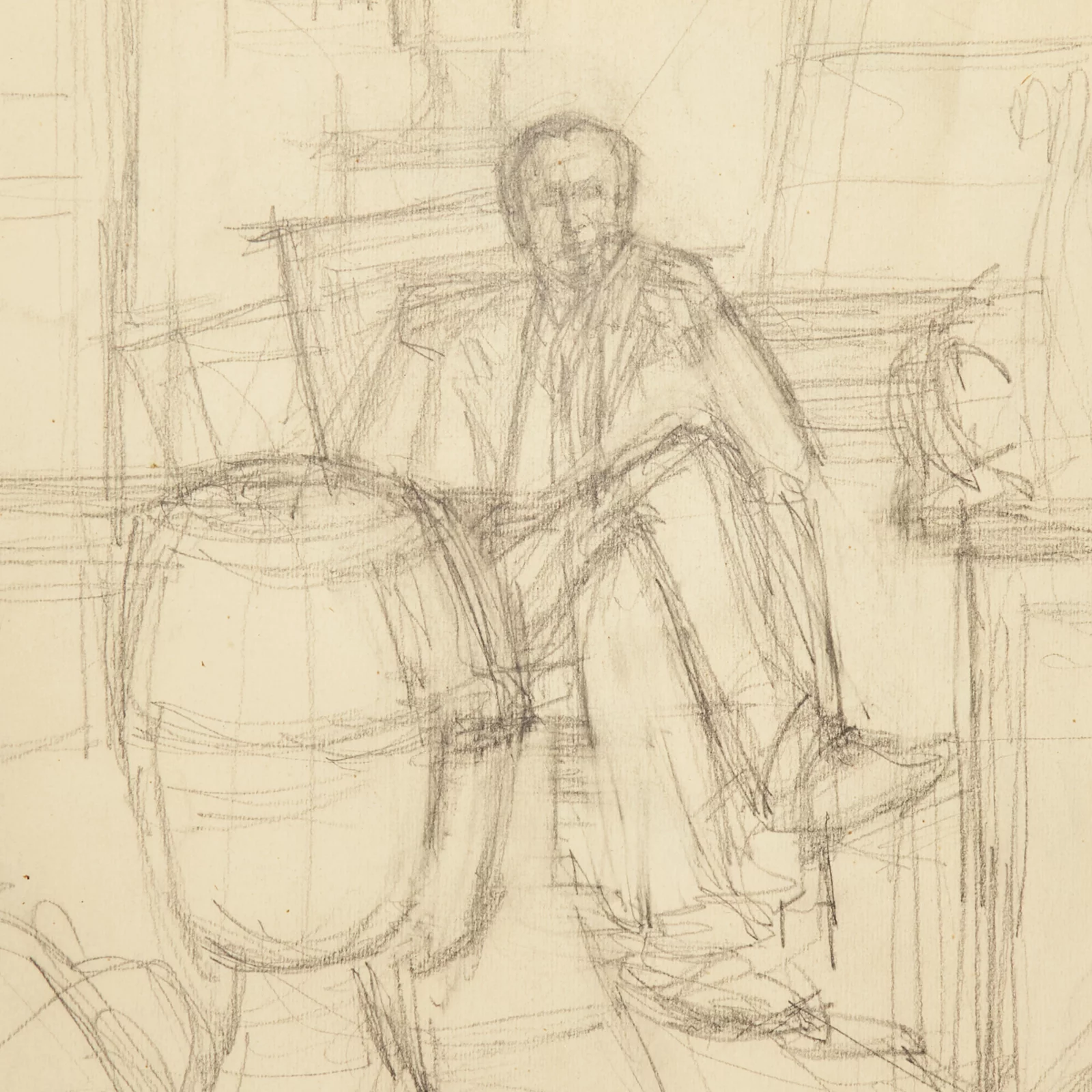A History of Friendship: Alberto Giacometti’s Portrait of Pierre Loeb
Alberto Giacometti (Swiss, 1901-1966) Pierre Loeb Seated in the Office of the Galerie Pierre / Pierre Loeb Seated (verso), 1946 | $40,000-60,000
On October 28, Freeman’s | Hindman will present a rare drawing by Alberto Giacometti from the Estate of Helen Scott of Philadelphia in its Impressionist and Modern Art auction. Executed in 1946, the work depicts the legendary Paris dealer Pierre Loeb in the intimate setting of his legendary Galerie Pierre, capturing in a few swift, searching lines the strength of their historic friendship.

Portrait of Pierre Loeb next to sculptures from Papua New Guinea and Lake Sentani (the « Hunchback » on the right), Denise Colomb (1902-2004), 1949. © Archives Galerie Albert Loeb.
By the time Giacometti completed this portrait in the immediate aftermath of the Second World War, Loeb had already secured his place among the most influential figures in the 20th-century art world, championing Surrealism from the early 1920s and introducing French audiences to Masters such as as Max Ernst, Pablo Picasso, and Jean Dubuffet.

Alberto Giacometti and Pierre Loeb, 1954 (Archives Denise Colomb)
The two men first met in 1929 through sculptor Jacques Lipchitz. Loeb was the first gallerist to offer Giacometti a contract, enabling him to exhibit alongside Arp and Miró during their year of collaboration. After returning to Paris from wartime exile in Switzerland in 1945, Giacometti set about rekindling old friendships, turning in particular to Loeb, who had remained a steadfast supporter and followed his career with interest. At the time this portrait was drawn, the pair was planning an exhibition of Giacometti’s latest sculptures—a promising event that ultimately never came to fruition.

Here, Loeb is shown seated in his gallery office, legs crossed in his characteristic pose, head tilted in a familiar, slightly quizzical manner. Behind him, the outlines of canvases and frames both anchor him in the physical space of the gallery and serve as reminders of his illustrious career. Giacometti’s hatched, searching pencil strokes capture not only the sitter’s unmistakable likeness, but also the commanding presence and incisive personality of the dealer. Despite the unquestionable likeness, there is a degree of elusiveness to the sitter’s facial features and body, a certain “lack of precision” to his portrayal that highlights its, “forever changing,” fleeting nature (Paul Moorhouse, Giacometti: Pure Presence, London, 2015, p. 150). The real subject matter of the artwork is “…space, this three-dimensional matter which has neither substance nor color, which is a sharply felt presence, but can only be negatively located between and around the objects which obstruct it.” (Alberto Giacometti, 1974, p. 35) The short lines used to compose this space accumulate to form a web between crossing objects, and may stand for the trace of the artist’s eye, “…swiftly and incessantly moving around the composition from one object to another, measuring the distances between them.” (Ibid., p. 35).

This previously unrecorded drawing belongs to a small group of works Giacometti made of Loeb in 1946 and 1947, including head studies that, like those of his brother Diego, accentuate the sitter’s lean features and haunting gaze. In 1950, Giacometti would even contribute four etchings as illustrations to Loeb’s Regard sur la Peinture. More than a portrait, this double-sided drawing stands as a testament to the enduring bond between two figures whose shared sensibilities helped shape the course of postwar modernism.